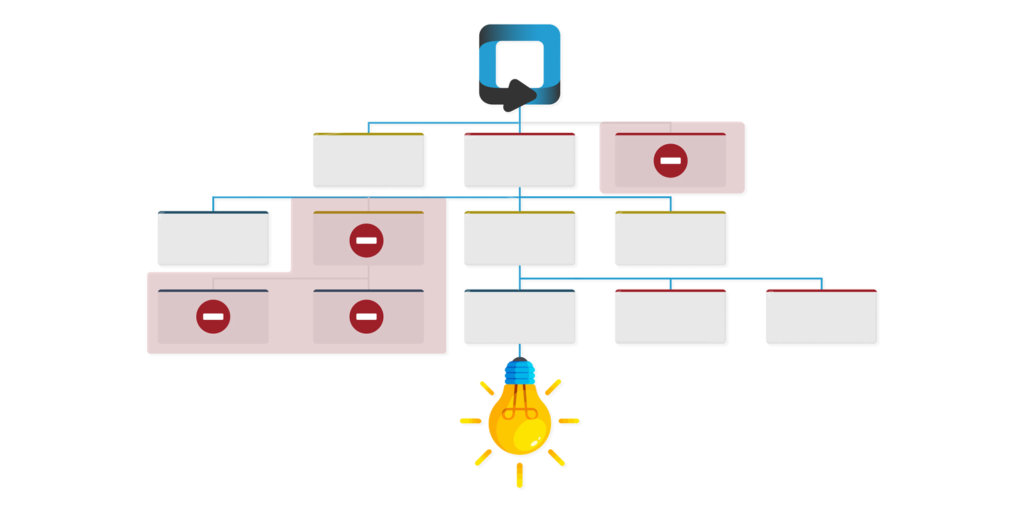When Less is More: The Art of the Subtraction Strategy
There’s a reason that Marie Kondo, author of The Life-Changing Magic of Tidying Up, is so famous. Her Konmari method of organization focuses on finding what brings you joy and then organizing your space around it. When it was published in 2011, it was the first strategy of its kind to effectively flip the narrative of cleaning on its head—rather than fixating on what you need to throw away, Kondo recommended focusing first on what you want to keep. This revolutionary approach made her a household name in most places, with multiple best-selling books, television shows and even a product line.
More than just focusing on what sparked joy, individuals flocked to her method because it allowed them to release the burden of keeping things that were no longer working for them or bringing value. Individuals and families found that adopting at least some parts of Kondo’s methods helped them to gain clarity for what they truly needed, and what they could do without.
While Kondo’s method is designed to deal with ‘stuff,’ there are lessons we can take from it that apply to any organization and doing business in general. Most companies look at strategy and progress by what they can add to the organization, and less by what they can take away. Considering a “subtraction method” effectively flips strategic thinking on its head, asking what can be taken away or minimized to offer value rather than what can be added.
A recent article in Harvard Business Review delves into this concept. As the authors note,
“…subtraction has untapped potential. With subtraction in mind, the designer might rid the app of unnecessary features, the manager might remove barriers to a more inclusive culture, and the advisory board member might suggest divesting from fossil fuels.” The article goes on to describe, however, how rarely subtraction is considered.
An experiment the authors conducted gave participants a scenario where subtracting was the optimal choice, using a simple grid pattern and clicks of a mouse. The grid was comprised of a vertical and horizontal axis that crossed in the middle, forming four equal sections (think of a 4-square court). In the top left section, four of the white squares were green. To make all sections of the image symmetrical, as the participants were asked to do, would require either 12 clicks of a mouse to add squares to each of the three sections, or four clicks of a mouse to simply remove the squares from one section. As you might imagine, most participants chose to add rather than subtract, even though that would have been the easier way.
Why does this idea of subtraction matter in business? Well as the grid exercise points out, sometimes simply taking something away solves a problem much faster or with much more efficiency than trying to add to it. And as the authors of the article point out, simply having a better understanding of why we gravitate away from subtraction can help us change our behavior.
For example, when something is added to the team – a new idea, new innovation to a product, new policy, etc., there is a lot of recognition of that new thing. Conversely, when something is taken away, the absence of it can often be taken for granted. Rather than being seen as a strategic investment, subtracting can be seen as correcting a previous wrong and, by nature, something that should not be thought of again.
This can be avoided by placing greater value on taking things away. Encourage teams to think about subtraction as a key element to improvement and then make note of those things that are being subtracted to better understand the value behind removing them. Bring in an outside team member when possible, someone not as close to a project, to evaluate and see where things might be improved by subtraction. Often the perspective from someone less engaged in the project can provide immense value.
Coco Chanel, the famous French designer and businesswoman, was an icon of fashion and taste. She is credited with saying, ”before you leave the house, look in the mirror and take one thing off.” Chanel understood that less is often more, even in the way we present ourselves to the world. When looking carefully at your own organization, consider one thing you could ‘take off’ that might help the other elements of your business stand out. Never be afraid to subtract in order to add to your success.
It’s worth noting that subtraction and addition are not an either/or paradigm. You can take away where it is needed while still adding things to generate important value and critical results. The key is to find the smartest path and embrace both addition and subtraction at times when they will do their most good.
As always, StrategyBlocks can help you better understand what needs to stay and what can go within your organization. Contact us today and let us show you how easy it can be to see the impact of your strategic vision on the actions of your team.




Leave A Comment